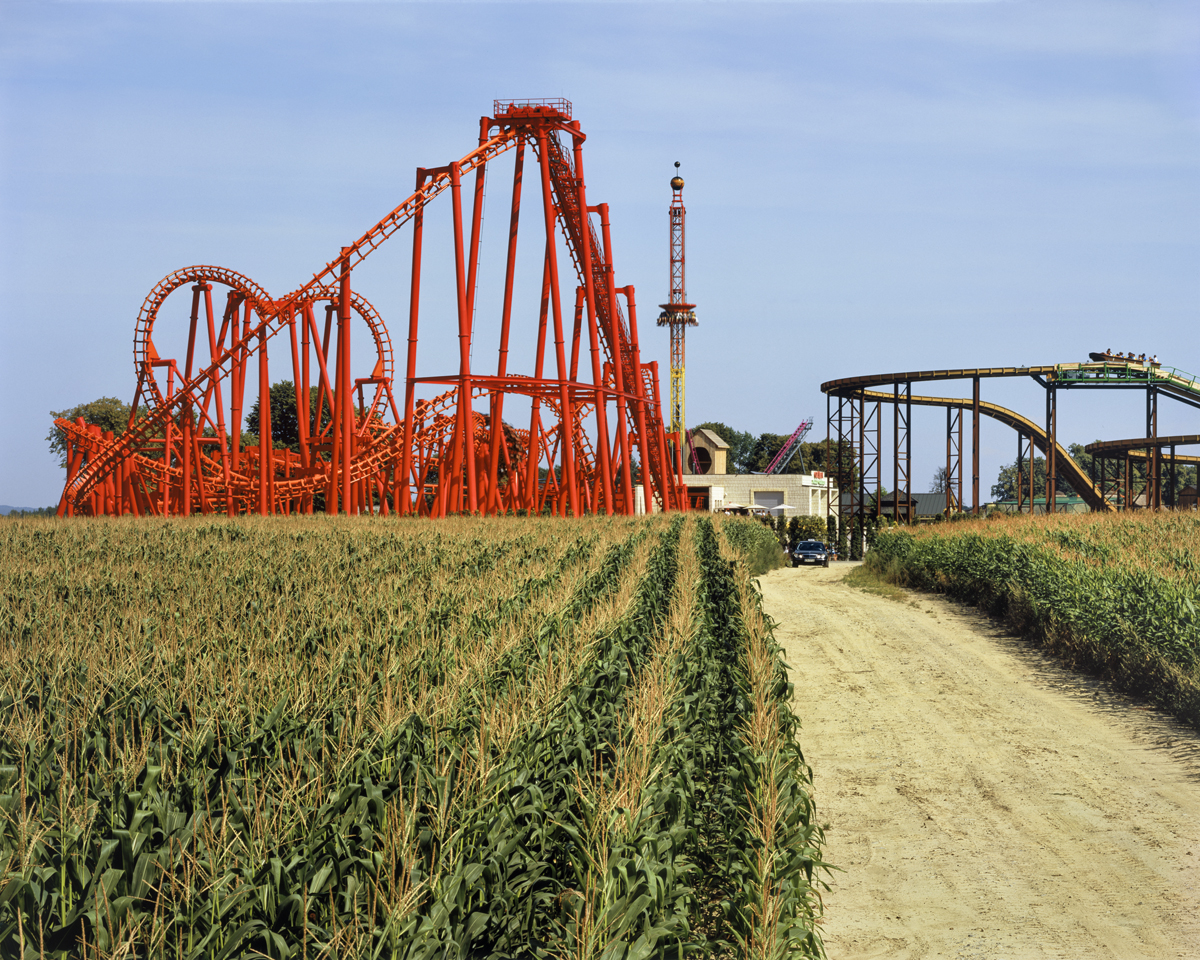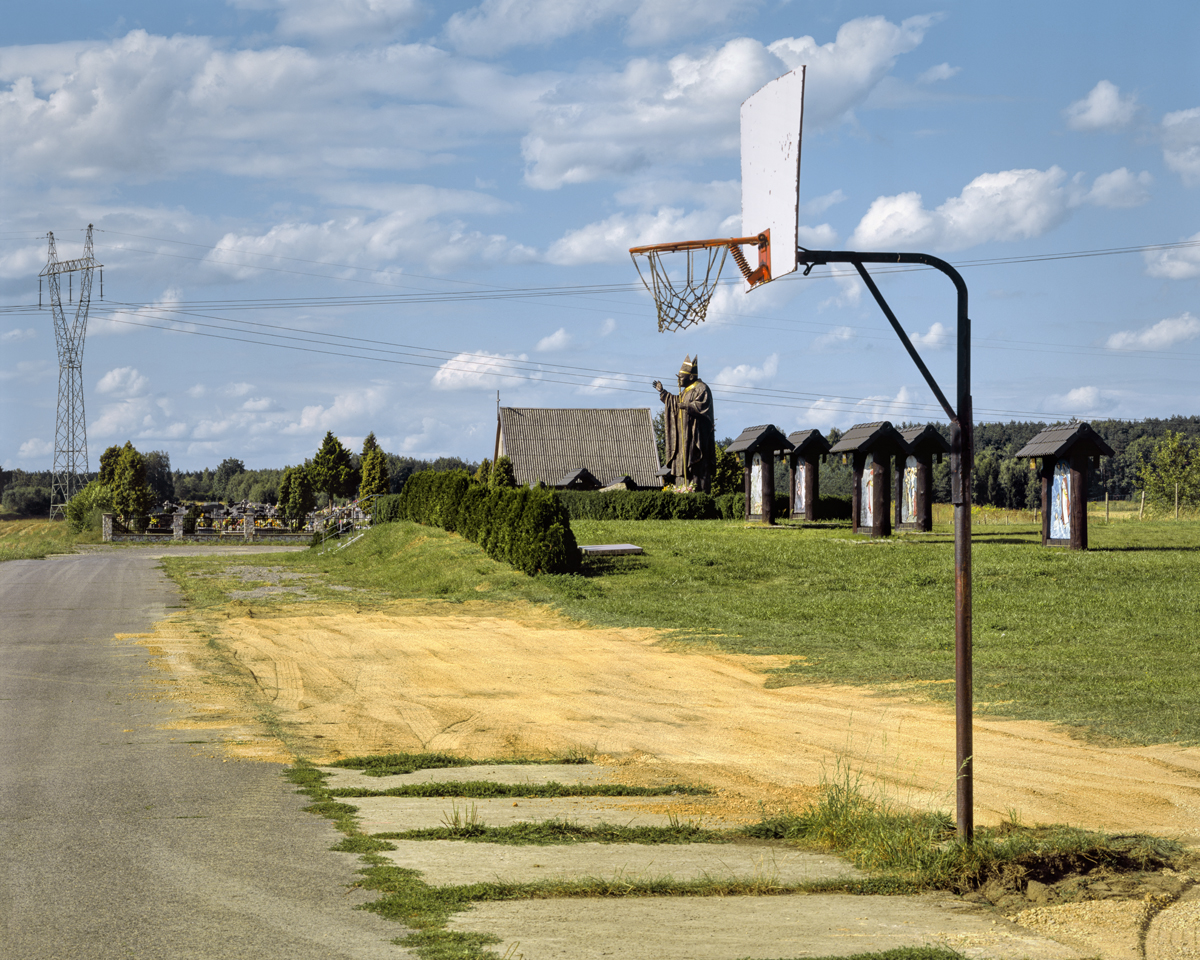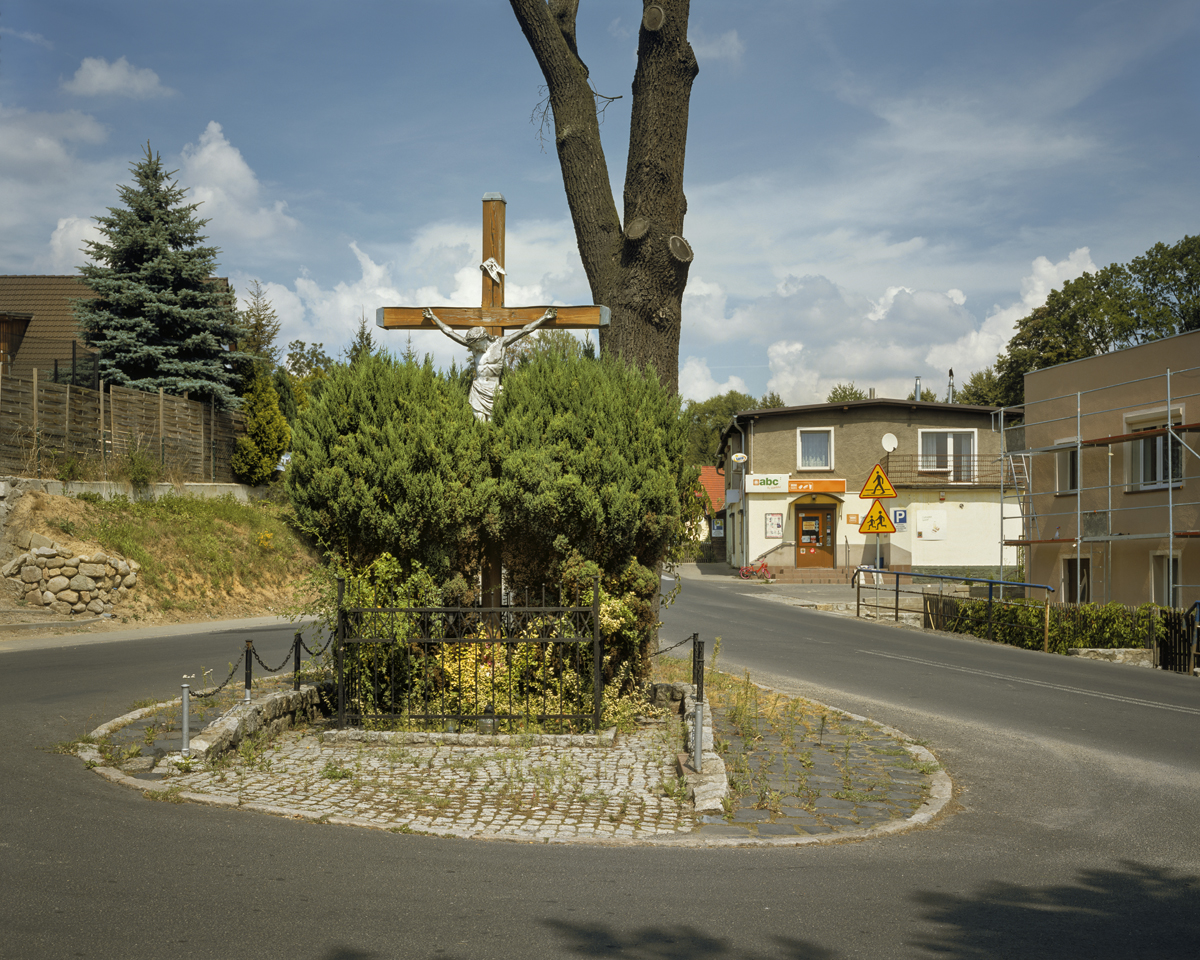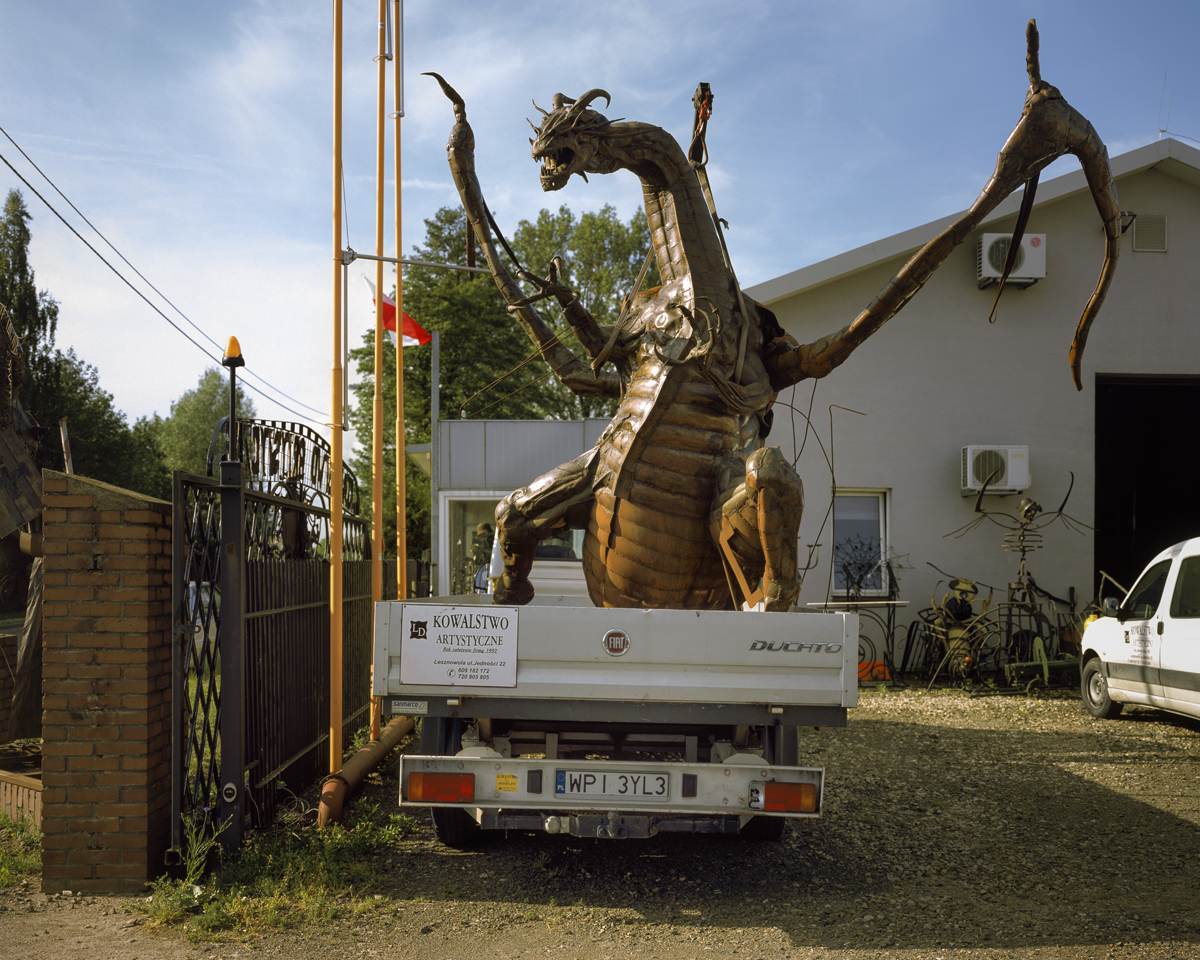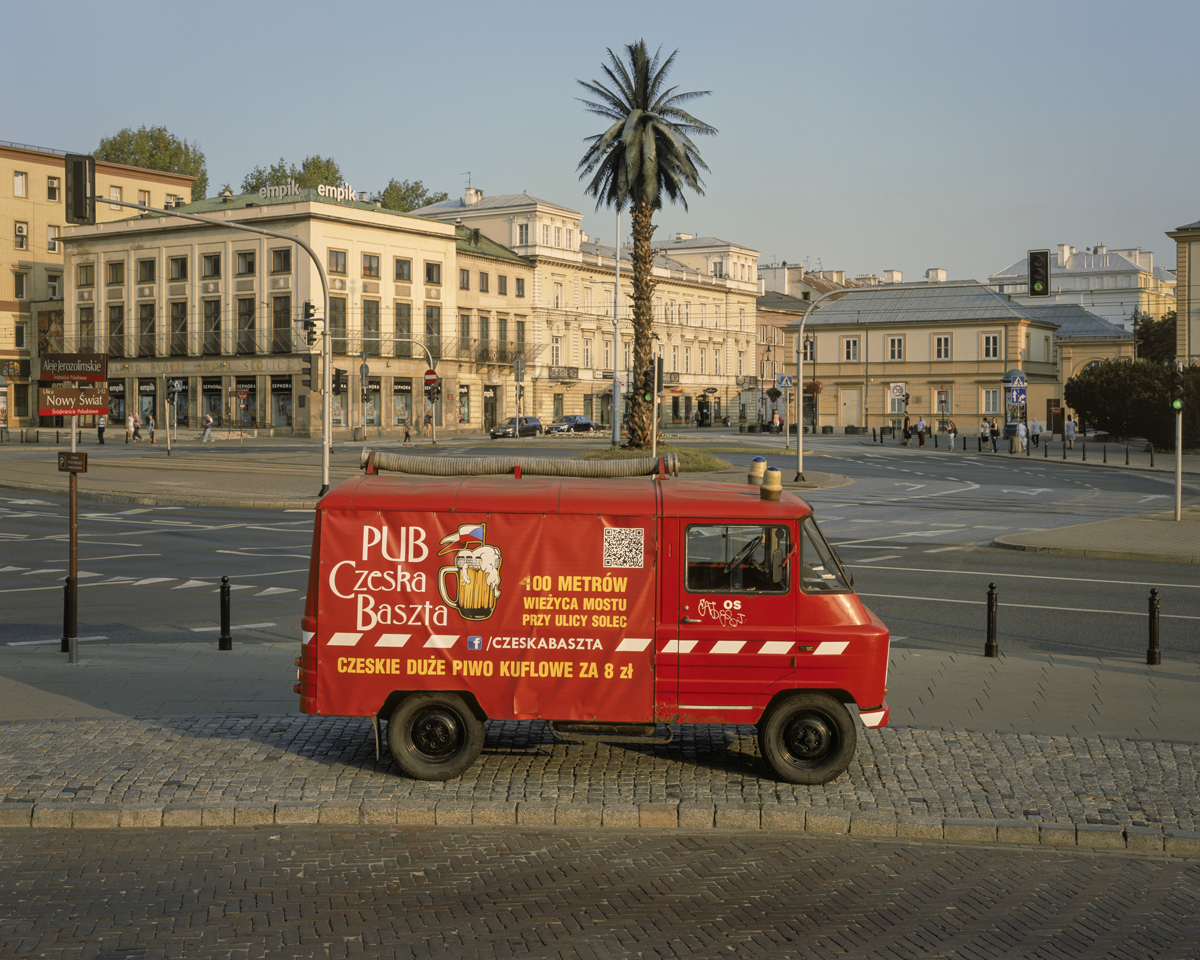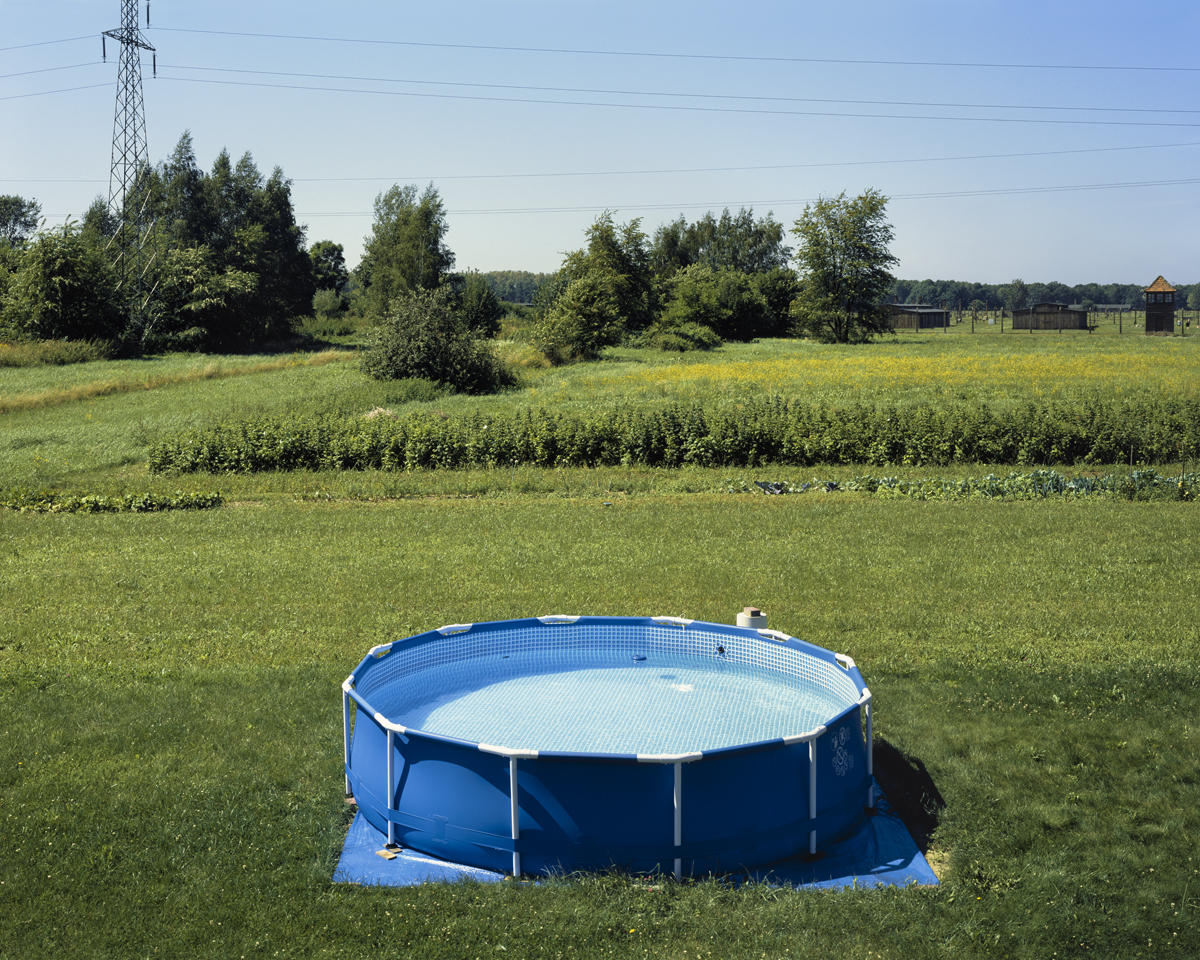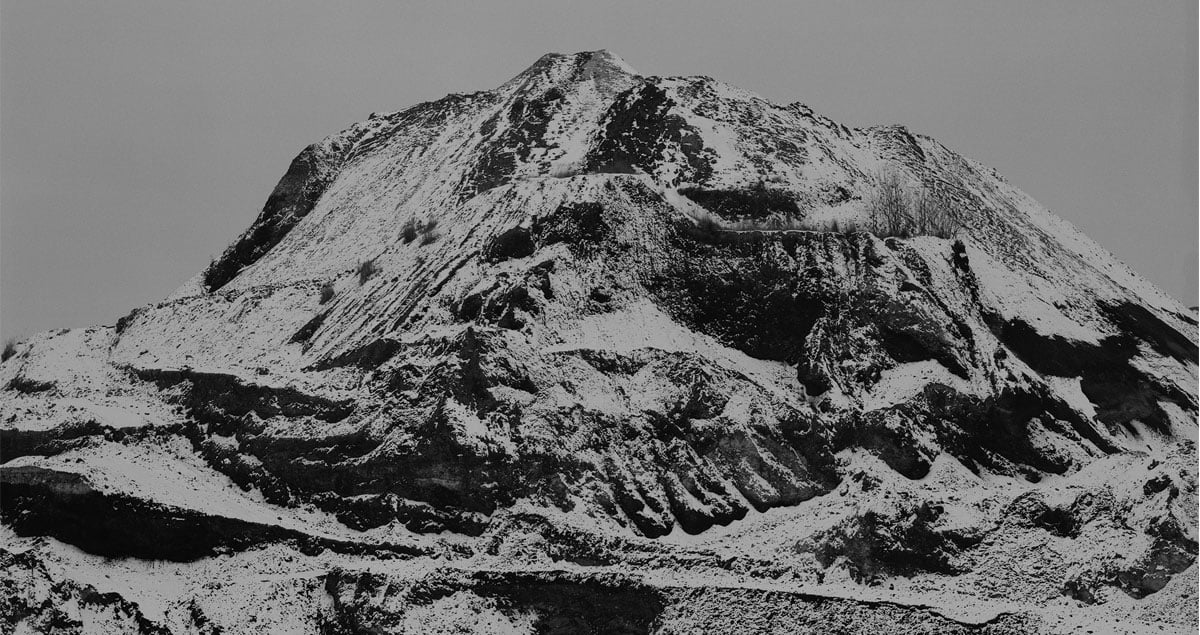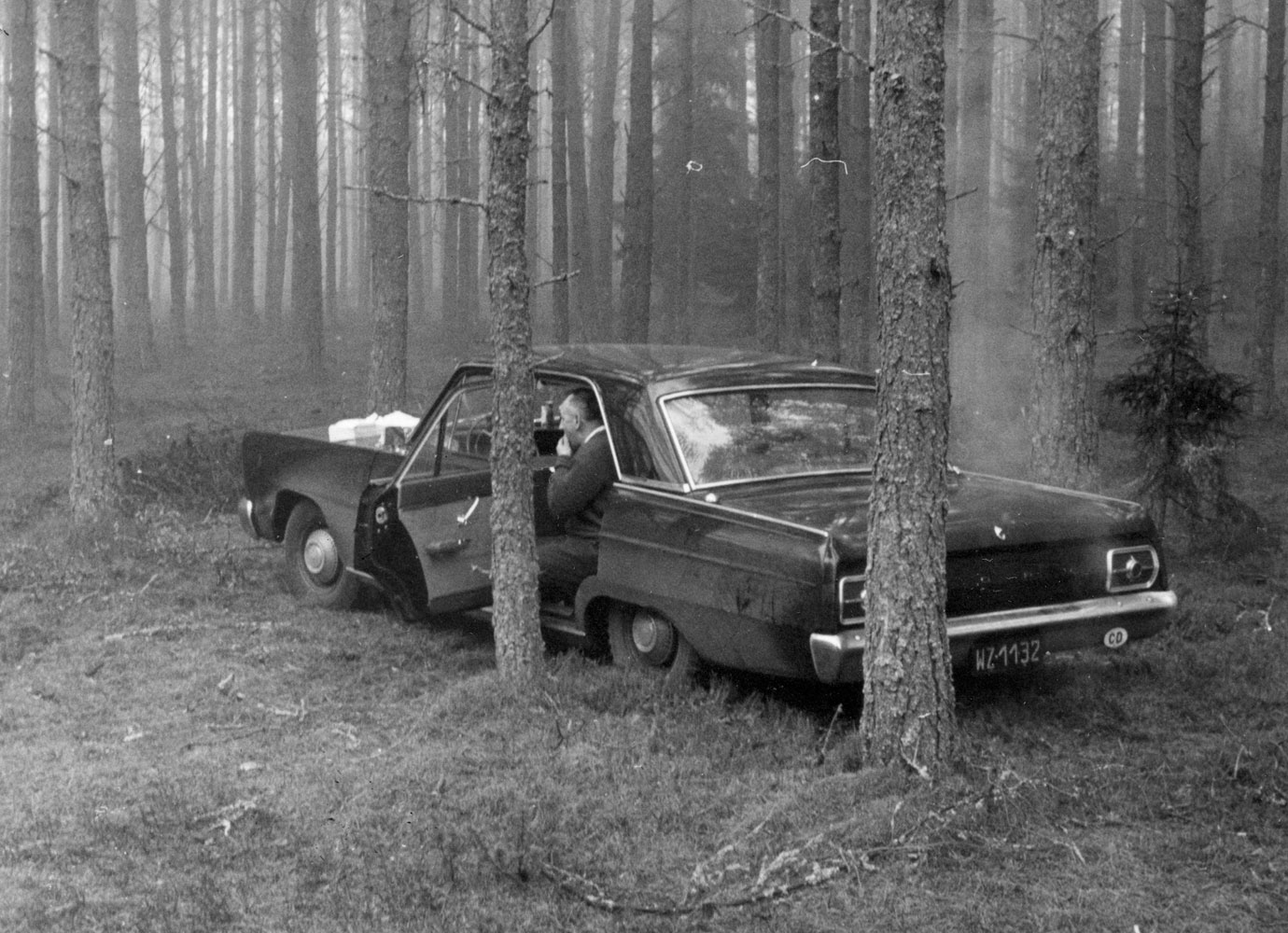From amusement parks to anti-abortion billboards, Tomasz Lewandowski captures Poland’s shifting landscape
35 kilometers west of Krakow, a tall red rollercoaster shoots out of a sea of cornfields. In a village in Lower Silesia, a man has placed an open bottle of Zubr beer on a fridge next to his yellow convertible. A family embarking on their third day of wedding celebrations catches the opportune moment for a group photo.
These are snapshots of Poland in summer, but there’s more to show of Poland’s warmest months than the lassitude of hot days. In the Tatras, indignant tourists motor past images of two bloody fetuses slammed onto a billboard. The road bends to the right.
In the summer of 2017, photographer and architectural historian Tomasz Lewandowski packed his large-format analogue camera, his 3.7-meter tripod, his ladder, and a sleeping pad into the back of his car and set off across Poland. He began to craft an image of a country scarred by a century of turbulent statehood, and more recently, disfigured by six years of right-wing rule.
In his ongoing photo series, Polish Summer, Lewandowski juxtaposes images of the seemingly commonplace with scenes that examine the country’s often undigested past and its recent flirtation with right-wing authoritarianism. Every summer, he travels through Poland, photographing both scenes he seeks out and those he happens upon. Lewandowski was born in Poland but moved to Germany in 2009. He lives in Dresden and works as a photographer, curator, and historian.
When he first dreamed up Polish Summer in 2016, Lewandowski was a few years into a PhD in architectural history. As he buried himself deeper in the history of the continent, he began to take an interest in Poland’s past. Before, while he was still living in Poland, he admits he would never have thought to photograph the country of his birth. “I didn’t really see Poland because it was my everyday reality, and you don’t really see the things that make up the everyday,” he recalls. “Back then I thought: Poland? What can one photograph there?”
By 2016, having lived the better part of a decade away, his perspective had changed. A simple question fascinated him: what’s the image of Poland? How does it look with fresh eyes? At first, he thought he would just photograph the mundane scenes of everyday life, consciously leaving out the recognisable places. Early into his first summer photographing the series, he realised that would not suffice.
Lord’s Ark Church, Krakow, Nowa Huta District
Headquarters of Telewizja Polska (TVP), the state-owned broadcaster, in Warsaw
In 2015, the right-wing Law and Justice (PiS) party won control of the government. Since then, it has systematically dismantled the country’s democratic institutions. It stripped independence from the judicial system, taking control of the highest courts. It took editorial control of the state-owned broadcaster, and is now moving to censor the independent press. It has further restricted Poland’s already strict abortion laws. In 2019, it won reelection, managing to maintain popularity partly by delivering direct payments to families with children, helping combat child poverty.
Many of Lewandowski’s photographs are like palimpsests, the most recent layer of history in the foreground, the past lurking somewhere beneath the latest coat of paint
In his first trips in 2017, Lewandowski would listen to the party-controlled public radio in the car and think: “that’s nonsense, what they’re saying. Really totally propaganda…” He had read about the latest developments in Poland, but to experience it still came as a shock. The country had always fought for democracy and sovereignty. In the 1980s, Poles had led the pro-democracy Solidarity movement that precipitated the fall of eastern bloc communism. In 2017, not even 30 years later, the new government, as he describes it, “was throwing those democratic values out the window.” At the very least, democracy should always be safe in Poland, he had thought. The country’s new politics were proving that assumption wrong.
Poland’s supreme court. Krasiński Square, Warsaw.
Gliwice, Upper Silesia. On August 31, 1939, SS officers broadcast an anti-German message in Polish from this tower, fabricating a justification for the invasion of Poland that took place the next day.
He soon realised that he could not fully examine Poland by focusing on the mundane or the aesthetic and began to consider what else he could include. 2018 was the 100-year anniversary of Poland’s independence after the First World War. He decided to use that 100-year history as a framework, photographing historically significant places that could help explain how Poland developed the way it did, and placing them next to the scenes of daily life.
Among these is a stone engraved “Versailles 28.6.1919” marking the border between Poland and Germany determined by the treaty of Versailles, and a radio tower SS officers hijacked to fabricate a justification for the invasion of Poland in 1939. Another of his photos shows a swimming pool a stone’s throw from Auschwitz. There’s also a photo of a memorial for a Nazi concentration camp where the Polish government continued to house prisoners after the war. We see the factories where striking workers precipitated the Solidarity movement in the 1980s. He also photographed places that represent the newest iteration of Poland’s history: the headquarters of the public broadcaster, the supreme court, and the makeshift memorial in Warsaw for a man who burned himself to death to protest the PiS party.
“Poland has a victim complex of sorts,” Lewandowski says. As he had learned in school, it is “the eternal victim, stepped-on from all sides. But we are innocent. We were always the good ones.” Once he left Poland and began to study its history, he began to understand that Poland was not, as he had been taught, “simply Christ among the nations, and everyone else was the devil.”
One image [above] shows a three-story house framed between an empty dirt lot and a pale sky at 7 Planty Street in the town of Kielce. In 1946, a Polish mob murdered around 40 Jews who were living there. For most of the remaining Jews in Poland, that was the signal to leave.
Polish antisemitism can be an unwelcome topic in Poland. After Polish-American Holocaust scholar Jan T. Gross published an article in 2015 criticising Poland’s rejection of refugees and pointing out that Poles killed more Jews than they did Germans during the war, the government opened a defamation investigation against him. President Andrzej Duda proposed stripping him of the Order of Merit, which he received from the Polish government in 1996 for his role in the Solidarity movement.
“A nation can’t build a democratic understanding, or a democratic mentality, if it doesn’t recognise the dark sides of its history, and doesn’t support historians working on them,” Lewandowski says.
The political undertones of most photos are carefully nuanced and sink in slowly rather than screaming out from the page, with one exception — a photo of a graphic anti-abortion billboard [above]. A group of foundations have financed these billboards throughout Poland. One faces a road in the Tatra mountains, one of Poland’s most touristy regions. It often angers tourists, Lewandowski says, and about once a week someone tries to deface, burn, or destroy it. Each time, someone comes and stands it back up. This particular billboard is in the town of Poronin, which, with just one more syllable tacked on at the end, means “miscarriage.”
Poland has some of the most restrictive abortion laws in Europe. In 2020, the country’s constitutional court ruled one of three existing exceptions unconstitutional: when the fetus is severely deformed. Now, abortions are only legal in cases of rape and incest, or if giving birth would endanger the mother’s life or health. When the new ruling went into effect in January, thousands protested in the streets.
Many of Lewandowski’s photographs are like palimpsests, the most recent layer of history in the foreground, the past lurking somewhere beneath the latest coat of paint, sometimes peeking out around the edges if you look closely. Throughout the series, buildings dominate. Some images show blocks built in the communist era from concrete panels, others show a frenzy of construction that emerged with capitalism.
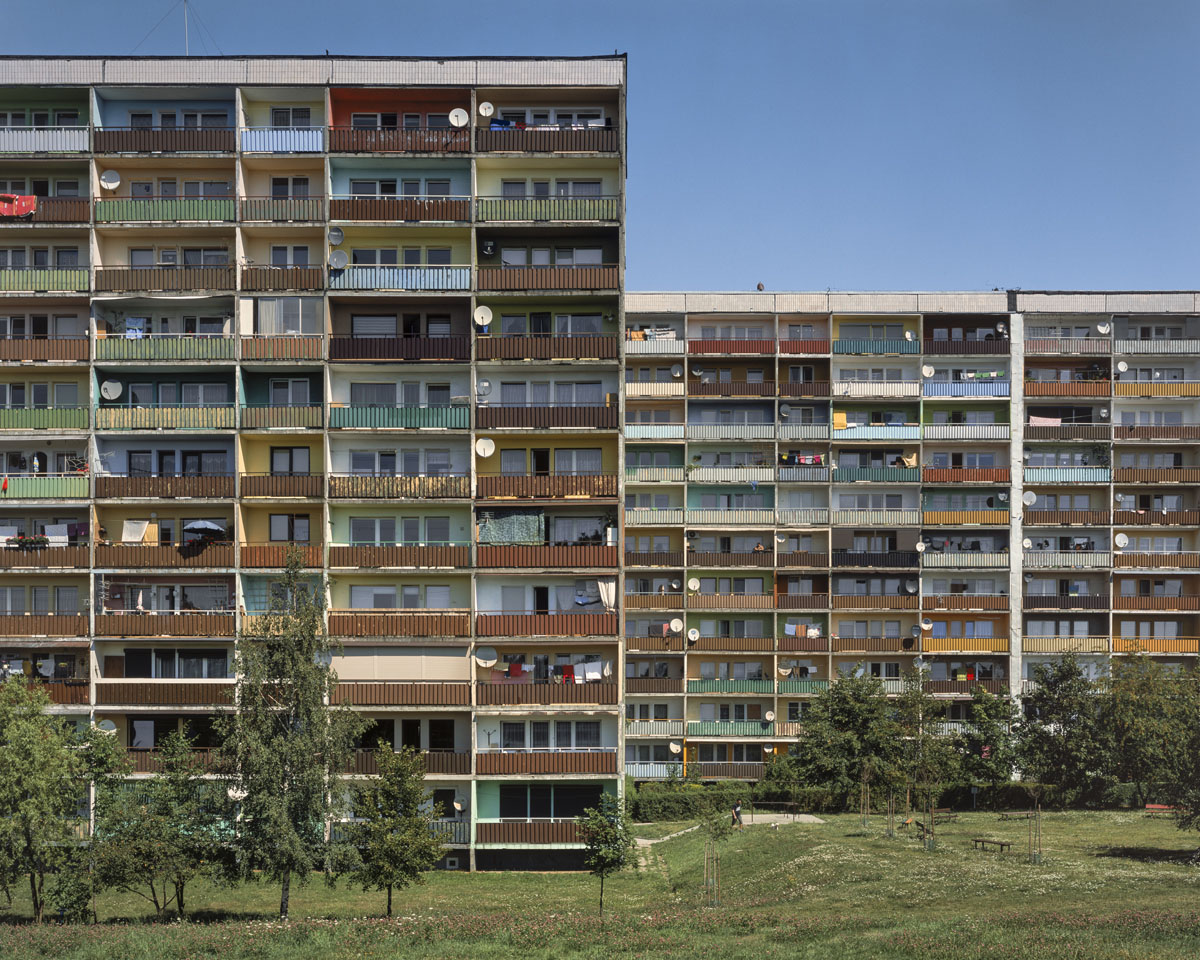
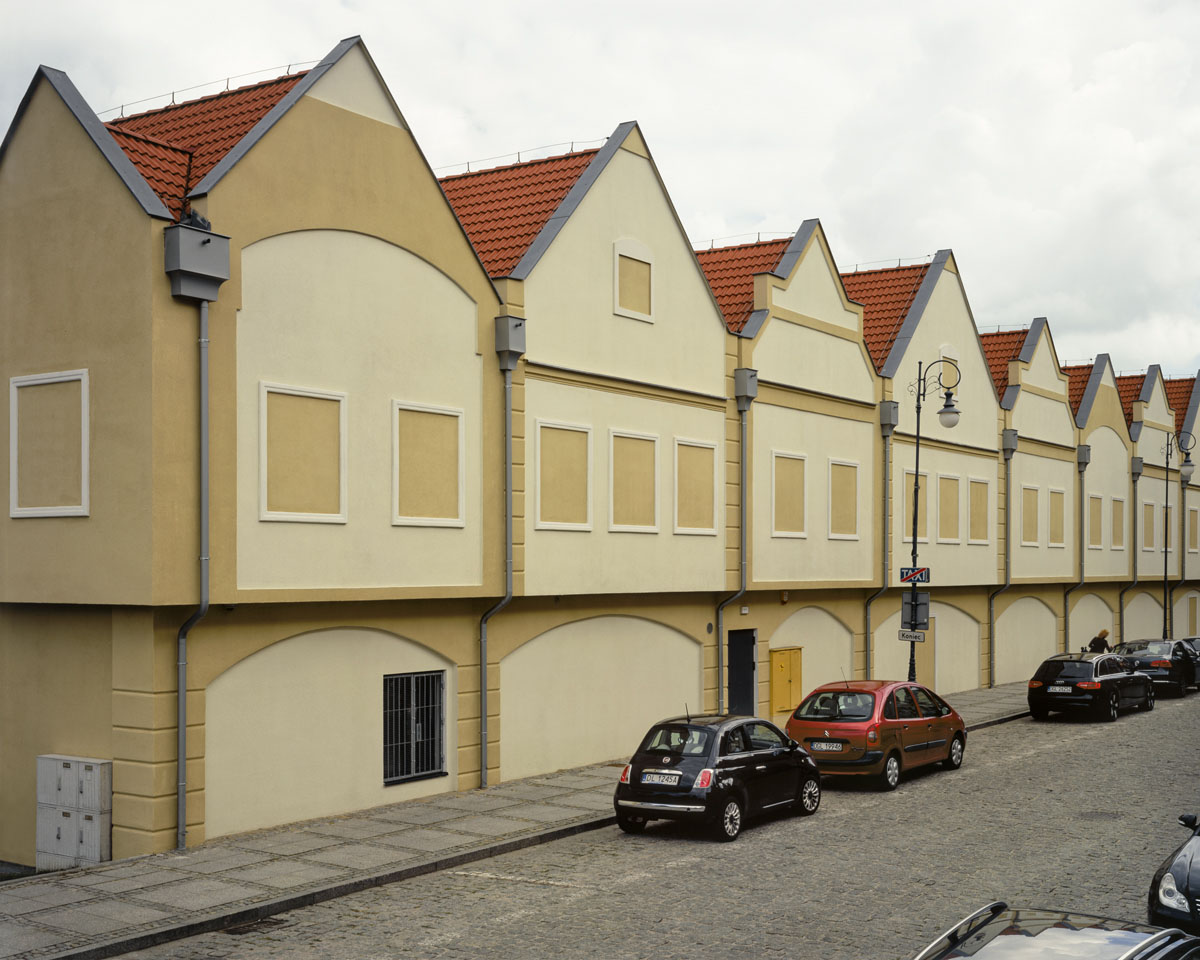
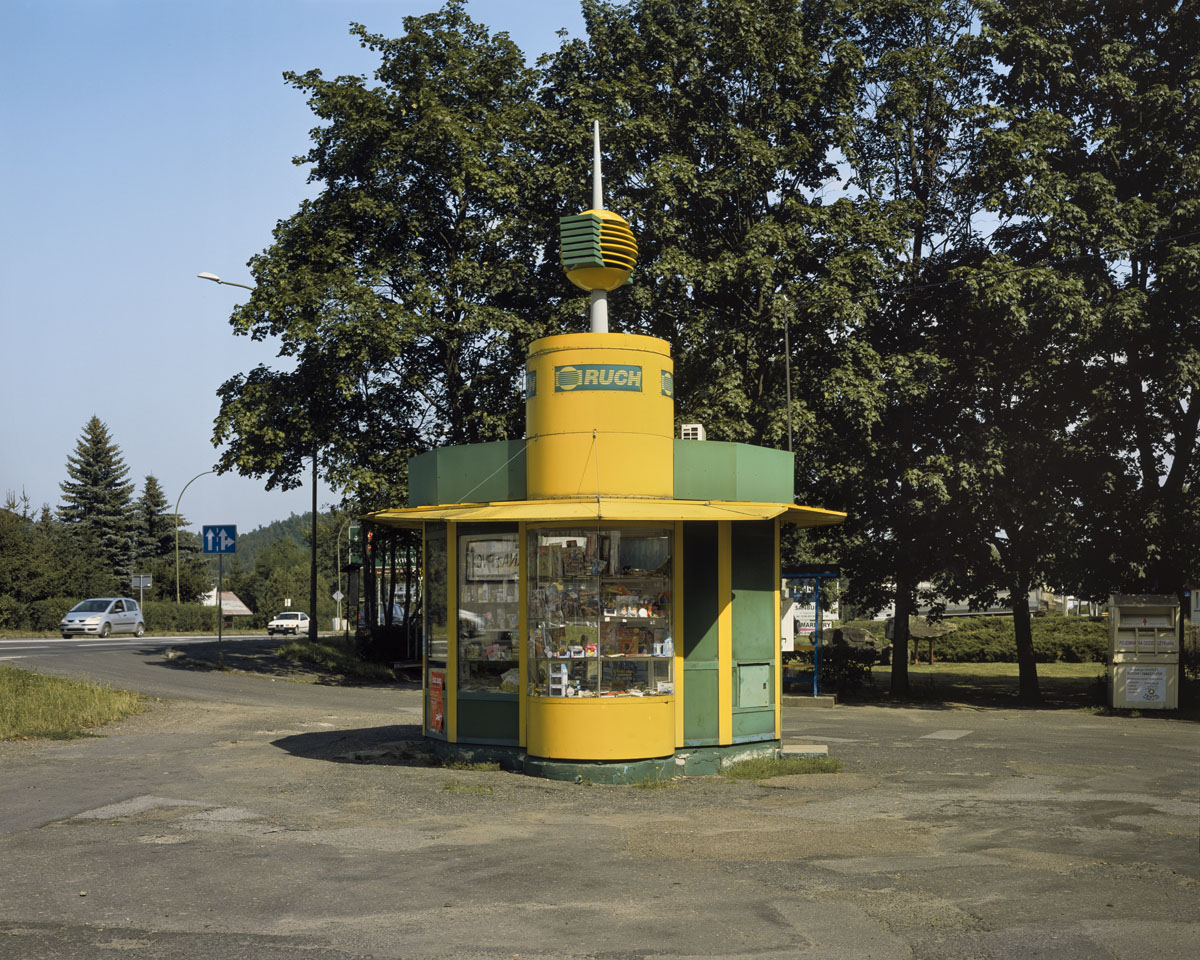
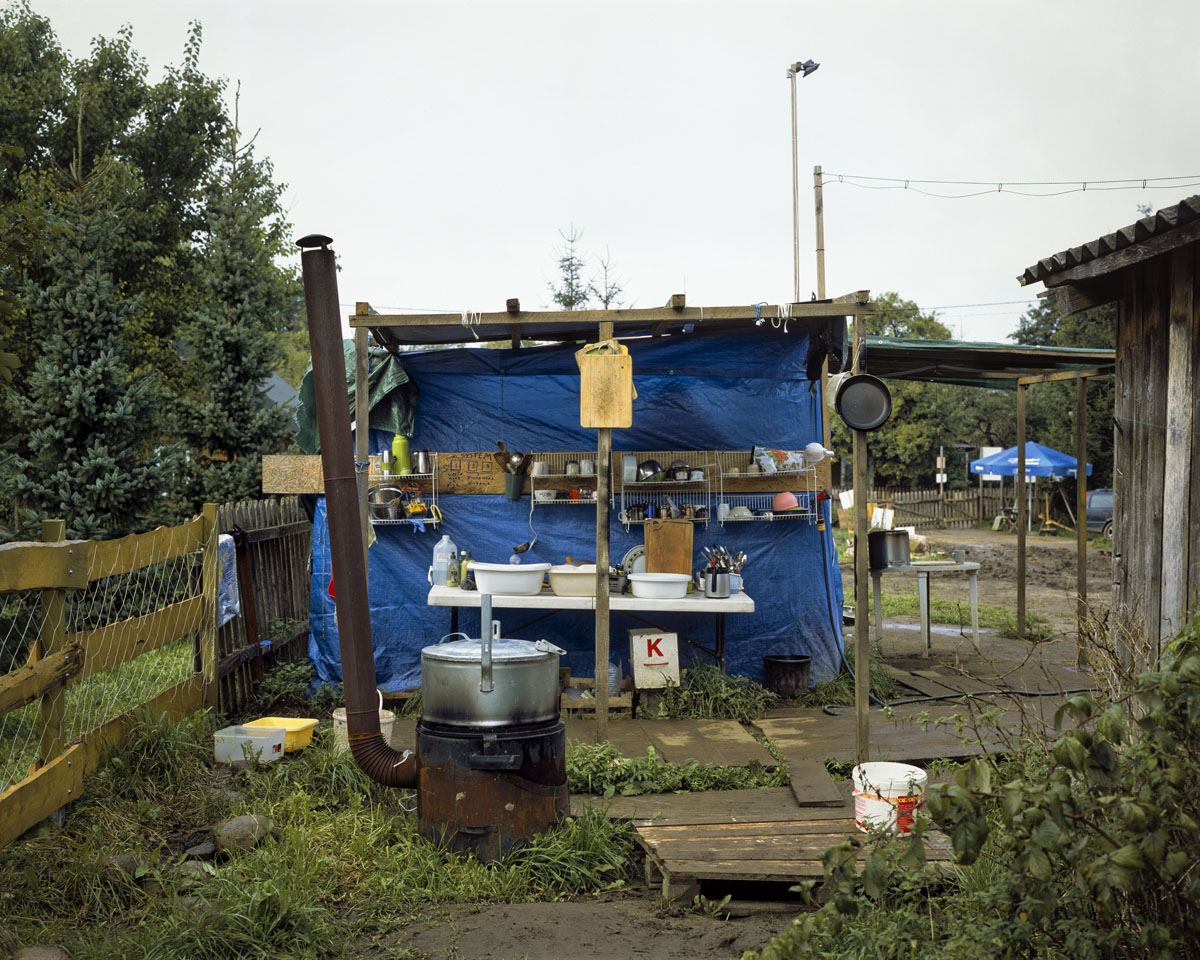
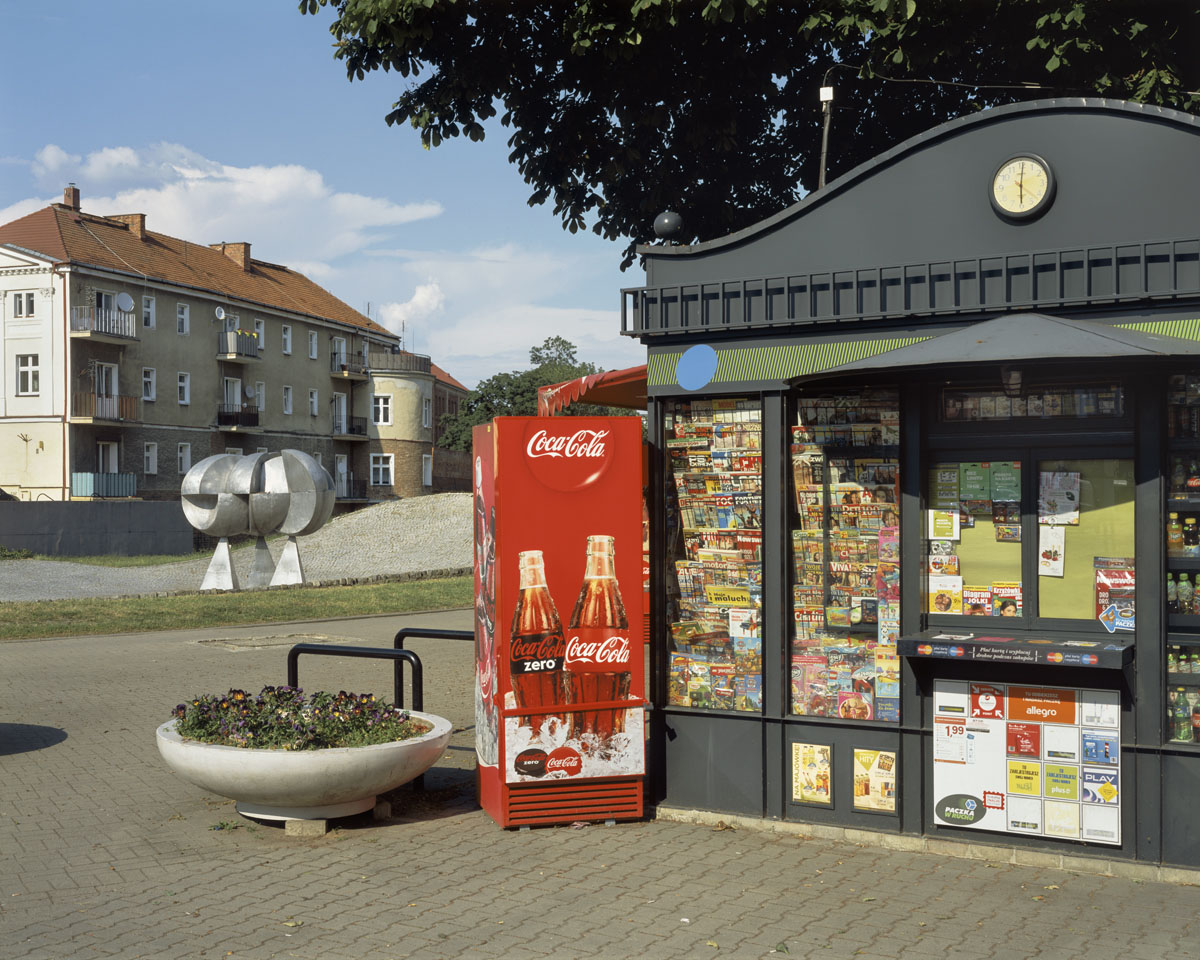
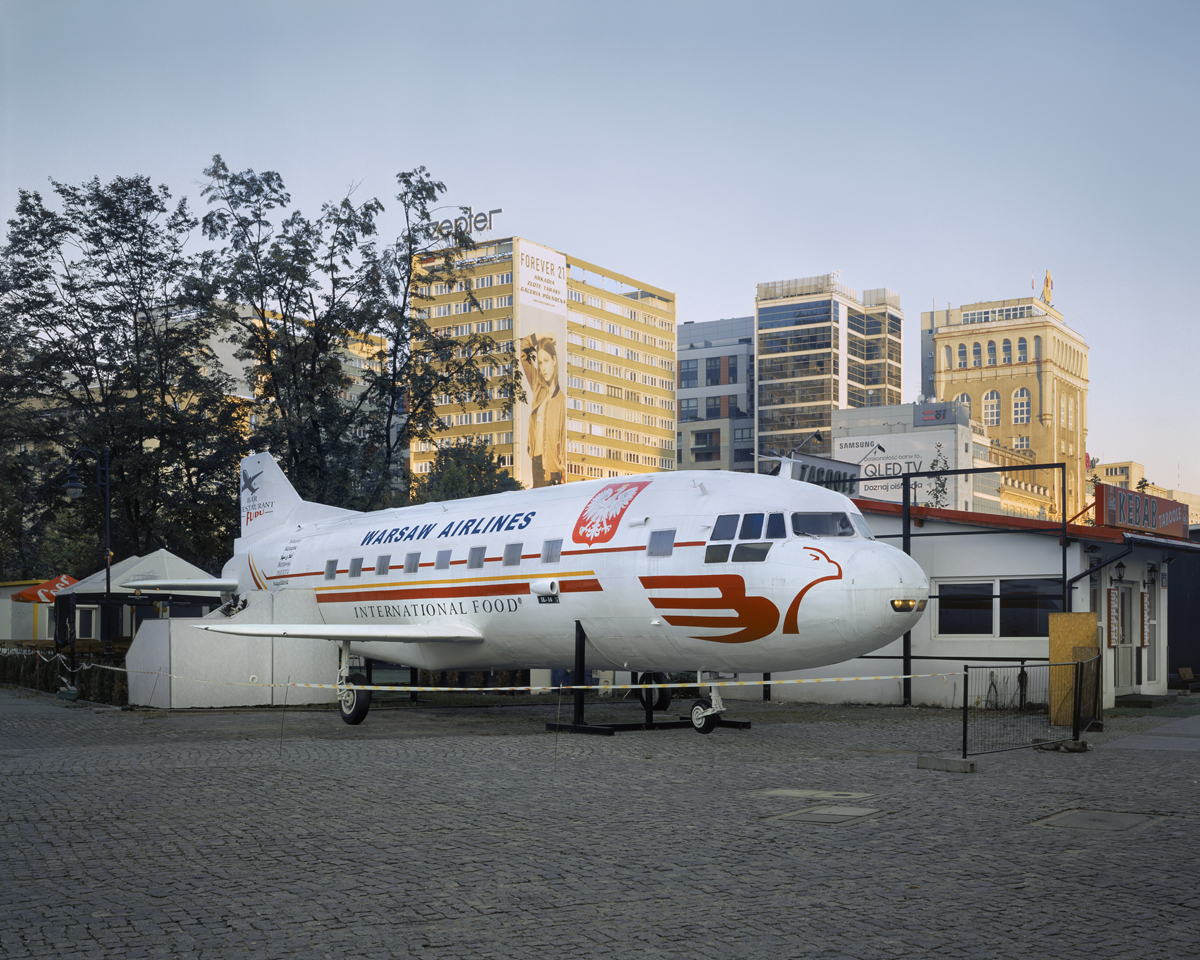
Until 2017, an airplane sat next to a kebab shop a few hundred meters from Warsaw’s Palace of Culture and Science, perhaps the city’s most defining building — not what planners had in mind for one of the most important spaces in Poland’s capital. After the grandson of the land’s pre-war owner won back the plot in 2006, tenants built food pavilions, violating a later set of zoning ordinances. One brought the airplane — after chopping off the ends of its wings to fit the space. He wanted to turn it into a bar. When Lewandowski learned in 2017 that the city had finally managed to secure the legal means to remove it, he immediately got in his car and drove to Warsaw. It was a perfect illustration of the confusion of the post-communist era, Lewandowski says, when the land, buildings, and firms that had previously been held by the state suddenly shifted to private hands.
The name Polish Summer was born one hot midday in a market in a small Polish town. A few benches away from Lewandowski, a man was bent over, drunk, his pants drooping down his rear revealing a crack. “It was really quite hot. 40 degrees Celsius. And the sun was very clear, and I thought: yeah, wow, that’s Polish summer.”
Later, Lewandowski considered another interpretation for the title. In reference to a society, seasons can be metaphors for stages of development. He began to wonder: “What stage is Poland in now? On the one hand, the whole thing is blooming economically after years of poverty. On the other, Democracy is being trampled… What is that? Is that still spring, or is it already fall? And I thought: yeah, perhaps that’s summer. In a way, we’re gathering the fruits of the development since 1990… but on the other hand fall already stands very near.”
A family stopped Lewandowski to take their photo whilst celebrating, not realising it would take 15 minutes.
